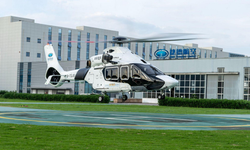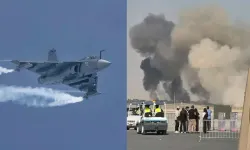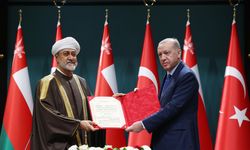An Azerbaijan Airlines Embraer 190 passenger jet, en route from Baku to Grozny, crashed near Aktau, Kazakhstan, on December 25, 2024. The disaster claimed 38 lives while 29 passengers survived, many with injuries. Allegations of Russian air defense involvement have sparked international concern, as Kazakh authorities provided a detailed timeline of the crash and the sequence of events leading up to it.
Russian Missile Allegations
Sources involved in Azerbaijan’s investigation claimed that the aircraft was struck by a missile from a Russian Pantsir-S air defense system. They also reported that the plane’s communications were disrupted by electronic warfare systems as it approached Grozny. A U.S. official suggested early indications point to Russian air defense involvement, while Canada called for a transparent investigation and for Russia to accept the findings.
Shrapnel damage to the aircraft’s tail section, seen in images of the wreckage, fueled speculation about an external attack. Aviation security experts noted GPS jamming in the region during the flight, a tactic Russia uses to counter Ukrainian drones. The crash occurred amid heightened activity by Russian air defenses, which reportedly downed 59 Ukrainian drones on the same day.
Russia has yet to officially address the missile allegations. The Kremlin, via spokesperson Dmitry Peskov, declined to comment, emphasizing that conclusions should not be drawn before the investigation is complete.
Kazakhstan’s Detailed Timeline
Kazakh Transport Minister Marat Karabayev outlined the events leading up to the crash during a press briefing in Aktau. He stated that at 10:43 a.m. local time, Russia’s Rostov air traffic control informed Kazakh authorities that the Azerbaijani crew had decided to divert to Aktau due to adverse weather in Baku and Makhachkala, Dagestan.
Ten minutes later, the crew reported an oxygen tank explosion in the passenger cabin, which led to passenger injuries and unconsciousness. Emergency response teams were immediately mobilized at Aktau Airport.
At 11:02 a.m., the crew contacted Aktau’s air traffic control to request an emergency landing. Controllers activated runway lights and prepared for the aircraft’s arrival. Despite two attempts to land, the plane struggled with altitude and stability issues. At 11:28 a.m., contact with the aircraft was lost, and it crashed near the airport.
Survivors’ Accounts and Wreckage
Footage recorded by passengers before the crash showed oxygen masks deployed and people wearing life vests. Survivors were seen evacuating the wreckage with injuries, while some reported a sudden loss of cabin pressure and disorientation.
Photos of the crash site revealed extensive damage to the aircraft, including evidence of shrapnel impacts on the tail section. Aviation experts suggested this may indicate anti-aircraft fire, although other possibilities, including structural failure or a bird strike, have not been ruled out.
Context and Broader Implications
The crash occurred against the backdrop of Russia’s ongoing war with Ukraine, where air defenses in southern Russia are on high alert due to frequent Ukrainian drone strikes. Publicly available flight tracking data showed disruptions consistent with GPS jamming during the flight’s journey across southern Russia.
The incident has raised tensions between Azerbaijan and Russia. Azerbaijani officials expect Russia to acknowledge its potential role in the tragedy, while Kazakhstan has committed to a thorough investigation but has not confirmed or denied the missile allegations.
International Reaction
NATO, The U.S. and Canada have expressed concern over the reports and called for an impartial investigation. Meanwhile, aviation safety organizations have issued warnings to airlines operating in the region about the risks posed by heightened military activity and electronic warfare.
What’s Next?
As investigations by Azerbaijani, Kazakh, and international authorities continue, questions remain about why the plane crossed the Caspian Sea and diverted so drastically from its original route. The world now watches closely for Russia’s response and the findings of the official inquiry, which could have significant political and diplomatic consequences.











